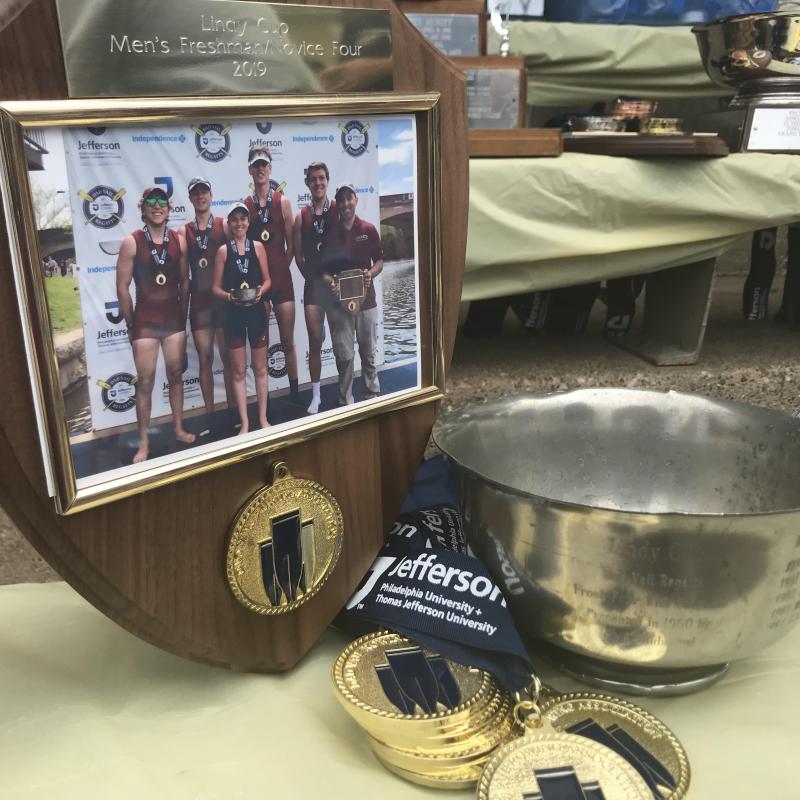Over my two decades now (omg, that is a hard thing to admit) I have had the pleasure of working with coxswains of all types. From my humble beginnings as a college club coxswain, to my current job as a varsity university coach, just when I think I have seen and heard it all, someone manages to surprise me or teach me something new. It is sometimes amusing to see the differences melt away over the years between two college coxswains. Coxswains come in three varieties. Some are considered a “starter”, some were not yet talented enough to get recruited, and then some walked on with no athletic experience. Some people take to being a coxswain quite quickly, while others work for years before feeling like they have what they need. I was the latter. Whether you are on a collegiate team or a Master’s team, there will likely be a collection of coxswains from different backgrounds and upbringings in the sport. Each of them will have a different way of doing things because, let’s face it, many coaches are not the best at teaching coxswains and most of what we know we learned through trial and error, or emulating what they see and hear other coxswains do.
Recently, our team here at Stetson University has hit a critical mass of coxswains. Some of them came from very competitive clubs. Some of them came from some admittedly not-so-competitive clubs. Their background, coxswain education, and confidence levels are not all the same. Yet on days when we have four or five coxed boats on the water, they are all required to work together and accomplish the same workout. Understanding that there are certain X factors to coxswains that make some ahead more than others, that is not what this is blog is about.
There are simple things that make working together, and with the rowers, a little bit easier. As a coach, we must make the decision of which coxswain goes into the priority boat for each race. The measurable things that go into that decision have more to do with ability to keep a straight course and who has the higher sense of technical needs of the boat to make the appropriate calls when needed. Then there are the X factor things that add flair; pitch, tone, assertiveness, trust, grit, tenacity, instinct etc. Those items are a whole other essay, so I won’t delve into that subject matter here. When working with a group of coxswains from a diverse background, it is a good idea to come up with a “common language” of standardizations. Lately there have been several instances where I have noticed the way a coxswain does something did not have the desired effect. I also noticed that rowers were confused by the way a different coxswain called something. That was not entirely the coxswain’s fault, as the rowers should be learning to be good listeners, but it was something that as a coach I had to think about remedying.
Here is a list of things that a team should have all the coxswains doing the same way.
Turning the boat
- Pick a way that a boat is to spin. Either ports back starboard row, or the chopping method, or one side holding while other side all row, or the rocking method. All accomplish the same thing, but when trying to keep 5 boats together and everyone spinning with a different method, a flotilla that is together will suddenly find themselves scattered. Pick one way and stick with it as much as possible. The “one side row, other side back” is the standard across most teams and even in most countries. When in doubt, use that one!
Race Plan Skeleton
- Try and standardize the skeleton of your team’s race plan among all the coxswains. Usually it goes…start sequence, transition, body, moves, sprint. Get your rowers and coxswains used to being involved in the construction of their race plan so that as rowers move between 1V, 2V or fours, they do not have to learn a totally new approach to the plan. They will only need to know the starting 5, which focus 10s will be used, when the Spring racing starts etc.
Land calls vs. Water calls
- Something that is annoying to rowers, and makes little sense to me, is when coxswains count strokes ON LAND, whilst standing still. For example, “In two, up over heads, one, two, up” See what I mean? What are they counting exactly? Everyone is standing still, and nobody is rowing. Counting makes sense on the water but doesn’t really serve a purpose on land. Instead, use the “Ready” command. Example “Up over heads, READY, Up”. This simplifies things a little but also has the added benefit of giving the coxswain time to LOOK, OBSERVE and make sure that everyone is ready and that there are no tree branches in the way of going up overheads. The “ready” also tells the rowers that the next command, in this case the action verb “up”, is the word to synchronize their movement with. Give your coxswains permission to make rowers go back to shoulders if they anticipate the “Up” and WAIT for the command. Anticipating the coxswain has resulted in lost fins, punctured hulls, people hit in the head with bows and sterns. Impatient rowers, uhg! As a coxswain you don’t need to be a jerk about it, but you should have the authority to make impatient rowers back up and do it right. I have found that it only takes the coxswain doing this a few times for a group of impatient rowers for them to start to listen again and remember that the coxswain is in charge.
- On the water, make the “In two” call a habit. Example “In two, weigh ‘nuff. One, two, weigh ‘nuff”. The “in two” perks up the rowers ears to listen that a command is coming. The “in two” gives them time to process, and the “two” synchronizes things. Call the “one” and “two” at the catch. The final “weigh ‘nuff” after the “two” is there for Three seat who more than likely wasn’t listening, and is now wondering why everyone stopped. Just kidding, we love you Three seat! The final “weigh ‘nuff” is superfluous and can be dropped if you have a crew that is good at listening. If you find that you need to keep repeating what the action was supposed to be, then add it back in.
- The exceptions for these water and land calls are as follows; When you are on the water, and holding still, and getting ready to row, you are not going to say “in two, row, one, two, row”. You will use the “ready” command. The other command is when pushing off the dock. Some people say, “In two, shove”, one, two, shove”. However, that can get confusing because you want a GOOD shove from all rowers and not a pathetic one that wind or current pushes you back. I have found that a countdown or count-up call works best here. Example “ON three SHOVE, one, two, THREE”. By specifying WHEN to shove it helps them to all sync that push.
Let it run
- There is no such thing as “let it run” on land. Think about it. How do you “let it run” and stop walking but the boat just keeps moving forward on its momentum? That is what “let it run” is on the water. If you want the rowers to stop moving, say so and just say “weigh ‘nuff” or “stop”. It is that simple.
Getting boats aligned
- This one is a coach’s biggest annoyance with coxswain, at least during a water practice. Get the boats all lined up and ready for the next interval, as soon as possible! Sometimes the CoxboxGPS, SpeedCoaches, CoxOrbs give different readings (or you have all three on water at same time and they never seem to agree), sometimes the rowers hold water harder, sometimes the boat is deeper in the water and the current affects it more, or the rowers are taller and the wind blows the faster, either way the responsibility of the coxswain is to get the boats aligned again. It doesn’t matter which coxswain’s GPS is right, or who finished first; get the boats aligned! That happens faster if every coxswain is working toward that common goal. At the end of the interval the lead coxswain should back water, the trailing coxswain should pull forward and any in-between should be moving toward the center of all the boats. This assumes that the pieces are happening on an unmarked body of water. If you are lucky to have a buoyed course to work with, and you are doing say, 250s or 500s, then go back or pull up to the closest buoy so that the coaches working from the launch can have a better view of margins during the intervals.
There is no “right” or “wrong” way, and my suggestions might not be what you even do in your part of the country. The important thing is that your coxswains and rowers communicate in an efficient way, minimizing misunderstandings, and running efficient practices. Here are some ways that I have observed ways my own team could run better. As Levar Burton always said, “you don’t have to take my word for it!”.

